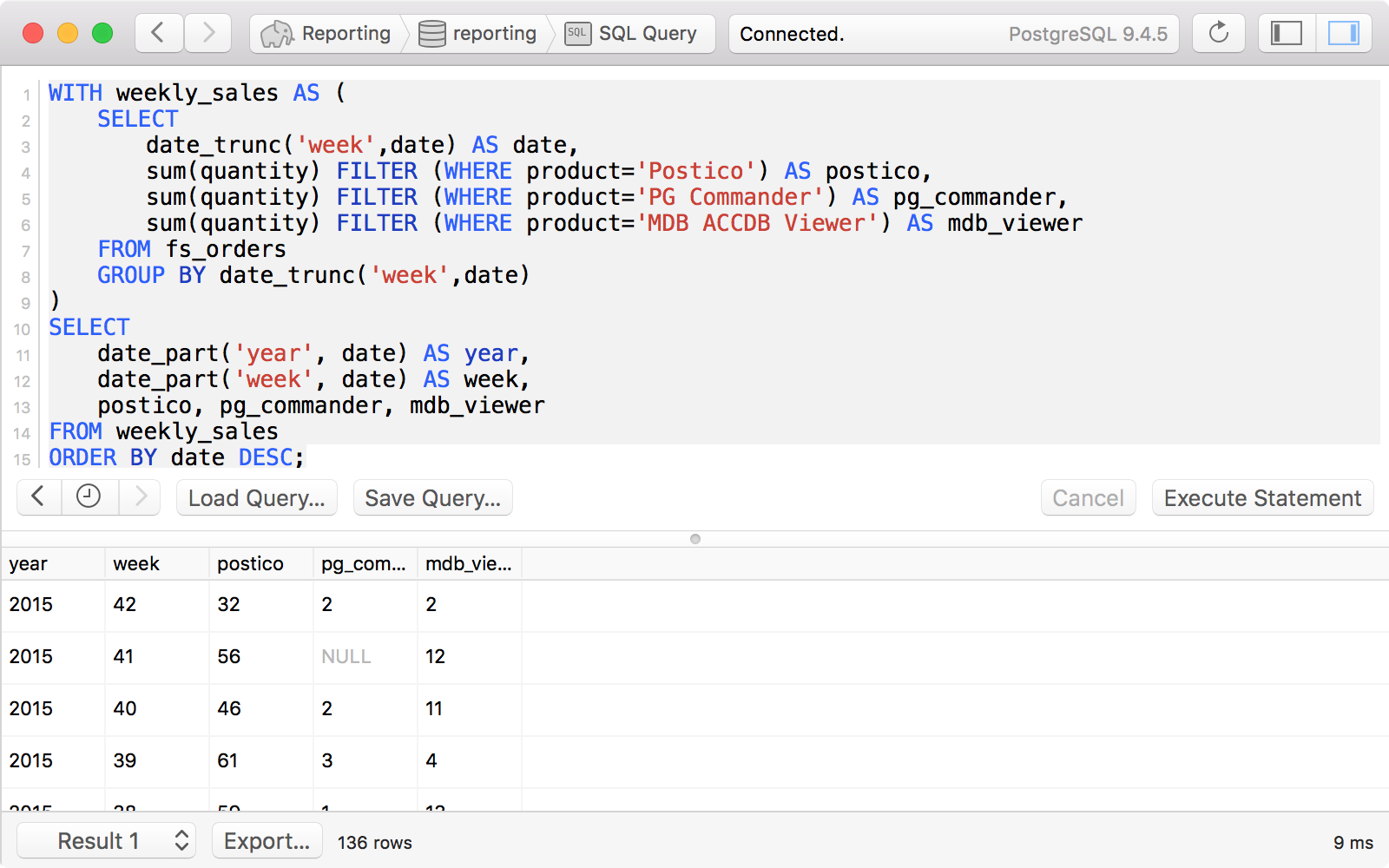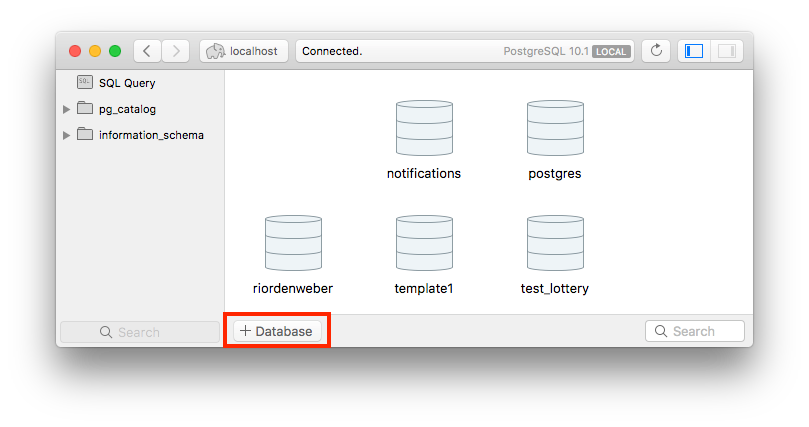On the other hand, Postico is detailed as 'A modern PostgreSQL client for OS X'. Postico provides an easy to use interface, making Postgres more accessible for newcomers and specialists alike. Postico will look familiar to anyone who has used a Mac before. Just connect to a database and begin working with tables and views. PostgreSQL manages database access permissions using the concept of roles.A role can be thought of as either a database user, or a group of database users, depending on how the role is set up. Roles can own database objects (for example, tables) and can assign privileges on those objects to other roles to control who has access to which objects.
- Postico 1 3 – A Modern Postgresql Client Permissions Server
- Postico 1 3 – A Modern Postgresql Client Permissions Command
- Postico 1 3 – A Modern Postgresql Client Permissions Download
Last Updated on July 23, 2020 by
Postico is a modern database app for your Mac. Postico is the perfect tool for data entry, analytics, and application development.
– connect to Postgres.app
– connect to PostgreSQL 8.0, 8.1, 8.2, 8.4, 9.0, 9.1, 9.2, 9.3, 9.4, 9.5 and 9.6 servers
– connect to cloud services like Heroku Postgres, Amazon Redshift, Amazon RDS
– connect to other RDBMs that use the PostgreSQL protocol, like CockroachDB
Postico is the perfect app for managing your data. It has great tools for data entry. Filter rows that contain a search term, or set up advanced filters with multiple conditions. Quickly view rows from related tables, and save time by editing multiple rows at once.
For analytics workloads, Postico has a powerful query editor with syntax highlighting and many advanced text editing features. Execute multiple queries at once, or execute them one at a time and export results quickly.
For application developers, Postico offers a full featured table designer. Add, rename and remove columns, set default values, and add column constraints (NOT NULL, UNIQUE, CHECK constraints, foreign keys etc.). Document your database by adding comments to every table, view, column, and constraint.
But the best part of Postico is how well it works. Postico is made on a Mac for a Mac. It works great with all your other Mac apps. Use all the usual keyboard shortcuts. Postico gets the basic things like copy/paste just right, and also supports more advanced features like services for text editing.
Information

- Details:
In this article I will share a few scripts in postgres databases that I think will help you manage your users.
The easiest way to list users is to run the following command.
Icons8 5 7 2 cr2. But it will not give you detailed information.
With the help of the following script you can see which databases the users have pemission to connect to.
2 4 6 | (select string_agg(pgd.datname,','order by pgd.datname) where has_database_privilege(pgu.usename,pgd.datname,'CONNECT'))asdatabase_name order by pgu.usename; |
With the help of the following script, you can also list by database basis.
2 4 6 | (select string_agg(pgu.usename,','order by pgu.usename) where has_database_privilege(pgu.usename,pgd.datname,'CONNECT'))asuser_name order by pgd.datname; |
In the above script, you can also query other permissions by typing one of the following permission types instead of connect.
2 4 6 8 | ,table_catalog ,table_name ,string_agg(privilege_type,', 'ORDER BY privilege_type)ASprivileges WHERE grantee!='postgres' GROUP BY grantee,table_catalog,table_schema,table_name; |
Postico 1 3 – A Modern Postgresql Client Permissions Server

- Details:
In this article I will share a few scripts in postgres databases that I think will help you manage your users.
The easiest way to list users is to run the following command.
Icons8 5 7 2 cr2. But it will not give you detailed information.
With the help of the following script you can see which databases the users have pemission to connect to.
2 4 6 | (select string_agg(pgd.datname,','order by pgd.datname) where has_database_privilege(pgu.usename,pgd.datname,'CONNECT'))asdatabase_name order by pgu.usename; |
With the help of the following script, you can also list by database basis.
2 4 6 | (select string_agg(pgu.usename,','order by pgu.usename) where has_database_privilege(pgu.usename,pgd.datname,'CONNECT'))asuser_name order by pgd.datname; |
In the above script, you can also query other permissions by typing one of the following permission types instead of connect.
2 4 6 8 | ,table_catalog ,table_name ,string_agg(privilege_type,', 'ORDER BY privilege_type)ASprivileges WHERE grantee!='postgres' GROUP BY grantee,table_catalog,table_schema,table_name; |
